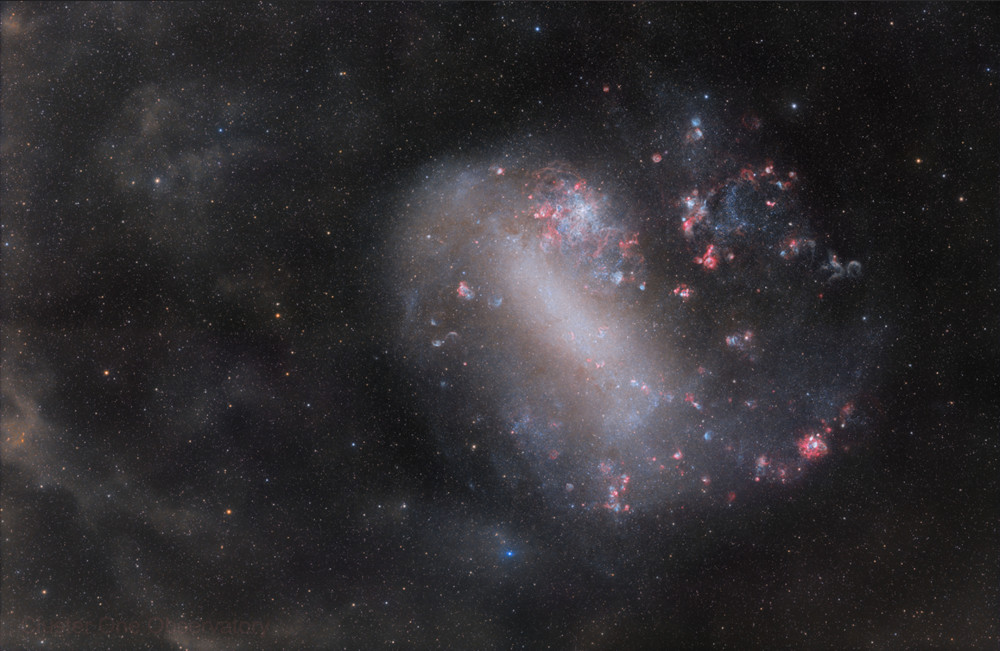Faint galactic cirrus towards the LMC + Cluster One Observatory + L-eXtreme & UVIR
Faint galactic cirrus towards the LMC
Credit: Cluster One Observatory
Filters: Optolong L-eXtreme filter, Optolong UV/IR cut filter
Faint galactic cirrus towards the LMC
"Our first Rokinon 135mm mosaic project"

Since we acquired the Rokinon 135mm f2.0 lens, we, as the “Cluster One Observatory” team had in mind an optical configuration that, in combination with our ASI294MC-Pro sensor, would allow us to obtain wide-field images. In fact, this configuration offers an amazing Field-Of-View (FOV) of 8.2 x 5.5 degrees, which is perfect for capturing excellent images of extended areas of the sky. As a matter of fact, some weeks ago we published our first light obtained in the Small Magellanic Cloud, a perfect target for a single panel with this optical setup.
Even so the large FOV, there are areas of the sky that clearly needs more extended FOV and, to maintain spatial resolution without sacrificing details, the answer is very well known: Mosaics!
And for our first mosaic project with this setup, we have chosen a good old friend: The Large Magellanic Cloud, which we have already mapped intensively using the William Optics SpaceCat 51 telescope and published here. This time, we decided to map a total of 4 panels.
Another special objective we're aiming out of this project is the detection of the faint and widespread integrated flow nebulae that surround the Magellanic Clouds. In fact, these structures were notably detected in our image featured as the “NASA Astronomy Picture of the Day (APOD)”, on February 11th, 2023.
The observations of this mosaic project were obtained during 10 nights, between November and December 2023, distributed in 3 blocks:
Block 1
2023-11-13, 2023-11-14
Block 2
2023-11-22, 2023-11-23, 2023-11-24
Block 3
2023-12-06, 2023-12-07, 2023-12-08, 2023-12-09, 2023-12-10
The mapping project of the Greater Magellanic Cloud was completed with a total of 518 light frames of 300 seconds each, adding up about 43 hours of effective observing time.
To this time we must add calibrations frames and, in some cases, nights in which data were obtained but, due to weather conditions with some clouds, that data was discarded from the final mosaic.
----------------------------------------------
Filter. Frames Hours
----------------------------------------------
UVIR 370 30.8
LeX 148 14.2
----------------------------------------------
Imaging Details
Lens: Rokinon 135mm f/2.0 ED UMC
Camera: ASI294MC Pro
Mount: AM5
Filters: Optolong L-eXtreme 2" · Optolong UV/IR cut
Software: Adobe Photoshop · Pleiades Astrophoto PixInsight · Steffen Hirtle GraXpert
Frames:
Optolong L-eXtreme 2": 148×300″(12h 20′)
Optolong UV/IR cut 2": 370×300″(30h 50′)
Credit: Cluster One Observatory




